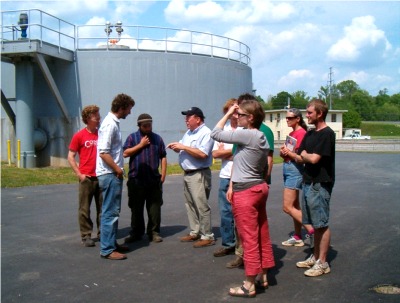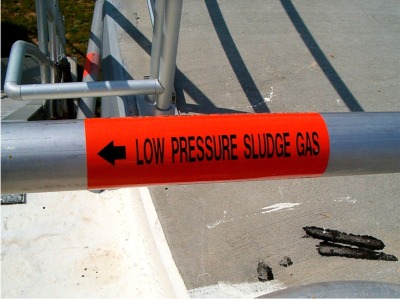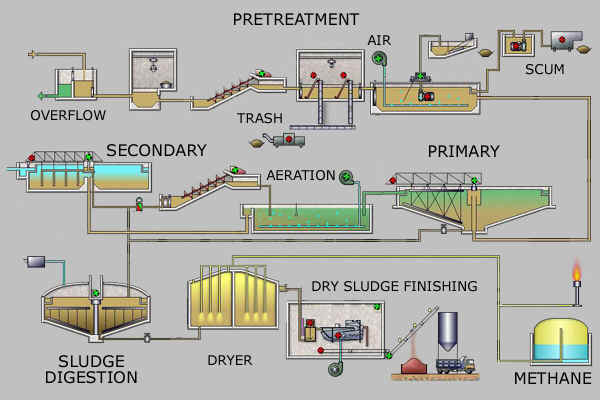CONTINUING EDUCATION
Tuesday Night Fuel Making
Fueling Around at the Coop - A good way to get some hands on biodiesel making experience.
April 1, 2008
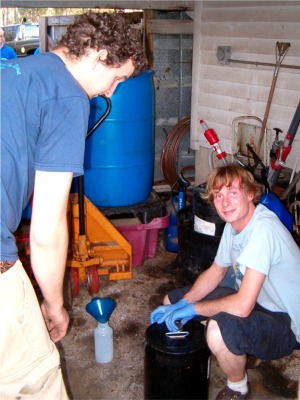
All 500+ Coop Members have an open invite to come make biodiesel on Tuesday nights.
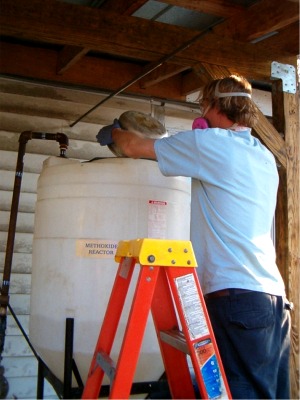
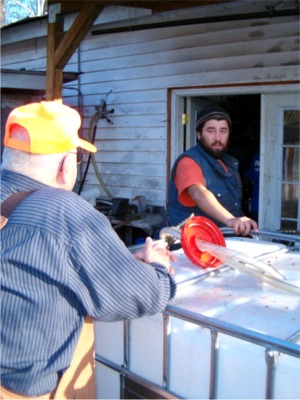
Caleb deals carefully with the Methanol catalyst. David listens to a story.
WVO COLLECTION TRUCK
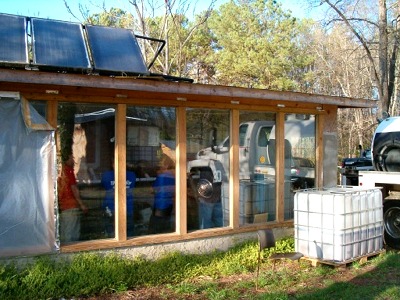
This pumper truck is used to collect Waste Vegetable Oil which is then turned into Biodiesel at the Coop.
CLEAN TECH
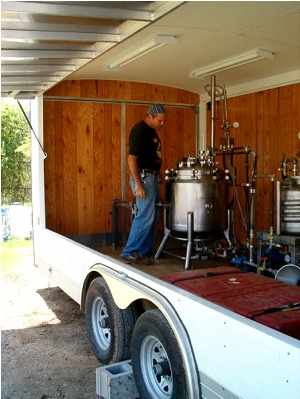
Clean Tech is a portable Biodiesel Plant, an indispensable piece of Piedmont Biofuels educational outreach program.
OWASA Tour
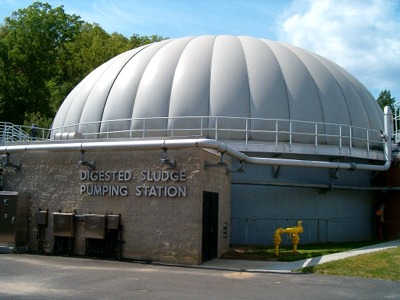
Intellectual curiosity brought Greg, Tim, David, Amanda, Caleb, Matt, Bob, Camille and Evan to the Orange (County) Water and Sewer Authority's Wastewater Treatment Plant. Our host, Walt showed us around and entertained us with tidbits of wisdom from his 30 years on the job.
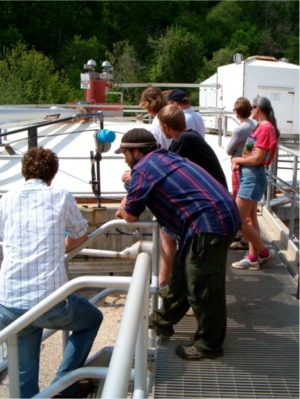

One of our main motivations for touring this plant is a project Caleb is working on at the Coop towards which we helpfully contributed two five-gallon buckets of fresh horse manure. He is working on a bio-digester which will compost glycerin, one of the by-products of Biodiesel production. The OWASA anaerobic digester takes material rife with pathogens and composts (or cooks it) at 130 - 135 degrees Fahrenheit until the pathogens die. The finished product is a 4.5/4.5/.5 fertilizer mix of nitrogen, phosphorus and potassium. Camille is wearing a dead butterfly on her shoulder that she found during the tour. The heat and the smells at the treatment plant attract lots of insects.
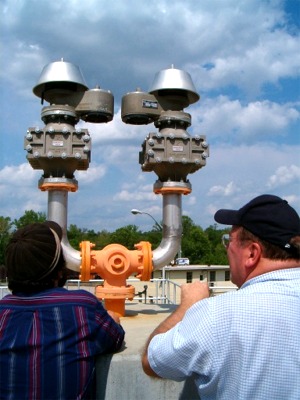
David admires the dual flame arrestors atop the methane tank. The plant produces 90,000 cubic feet of digester gas per day. We saw all kinds of engineering designed to prevent explosions and fires because, as Walt put it, "It's a bad day when things go boom."
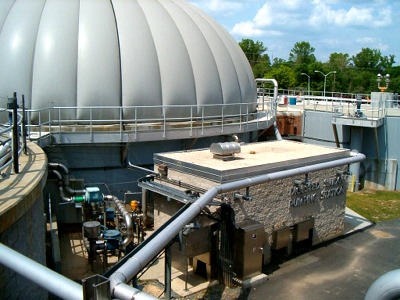
The OWASA plant has the capacity to treat 14.5 million gallons a day and is currently processing 8 million gallons. The volume fluctuates wildly based on whether the University of North Carolina is in session or not. They use an anaerobic digester, aeration ponds in a process similar to the diagram below.
Courtesy: Wikipedia
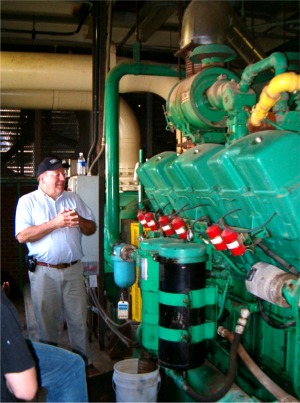
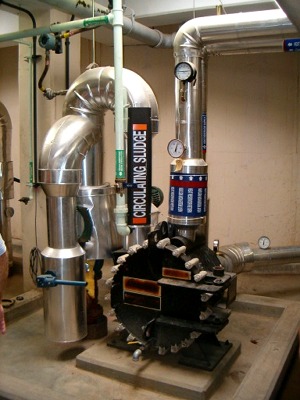
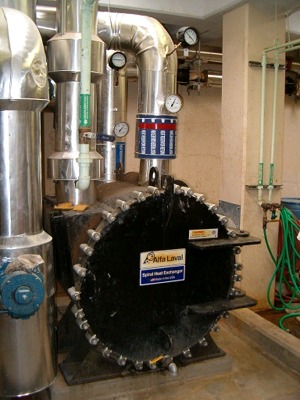
Walter shows off the internal combustion engine that runs on recovered methane gas. He pointed out that the plant is a "house of cards built on electricity" and tells a hair raising tale of when Hurricane Fran wiped out the power in 1996, flooding the entire project in, well - deep dookey.
[Latest] [ Home ] [ Up ] [ Continuing Education ] [ Slow Food ] [ Live Music ]
